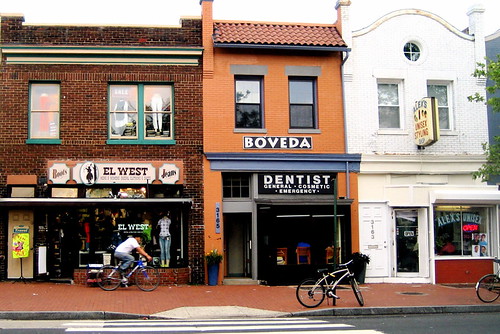HCWDC INTERN, ASHLEY PORTILLO INTERVIEWS THE CURATOR OF THE FRANKLIN SCHOOL EXHIBITION
Visit http://www.franklinschooldc.org/ to learn about the Franklin School Exhibition which was held at the Historical Society of Washington, DC. Visit the Franklin School at 13th and K Streets, NW in downtown DC. Find out more about this project at our 4th Annual DC Community Heritage Project Showcase on Wednesday, December 8. You are guaranteed to learn something new about DC at this FREE program and reception! RSVP today!.Q: How did you become involved in preservation?
A: Oh my God it has been thousands of years (laughs)! As a child, I remember looking at people fixing up their houses. Then when we moved to Capitol Hill in 1969 and bought an old house, I got interested in the history of my own house and those of my neighbors.
Q: Did you grow up in DC?
A: No, I grew up in upstate New York, but I’ve lived here (in DC) since 1965. So I have some views of the past and present (laughs).
Q: Tell me a little bit about the significance of the Franklin School.
A: As I worked on the exhibition, Capitol Funding, I realized its significance for this city. It is an architectural landmark and educational landmark, as far as classroom design and educational programs. It made 19th century public schools respectable when they hadn’t been. Then, I got into 20th century history and I found that a lot of civil rights battles took place at the Franklin School. I knew it was a landmark but not one where the civil rights movement had taken place.
 |
| Image Courtesy DCist.com |
A: Well, it used to be a homeless shelter. Some people want to reopen the Franklin School as a homeless shelter again. But that doesn’t solve the plight of the homeless. It’s available, it’s space, but it doesn’t solve the problem. It’s not suitable. In reopening the space, they could find something better if they tried. Things have to move along, you can’t just freeze everything. But this is a landmark- a National Historic Landmark.
Q: What is your vision for reviving this historical landmark?
A: There’s been talk about converting it into an adult graduate school or as a UDC Law School because these don’t require gyms and ball courts like a regular school does. And the rules prohibit the construction of gyms and courts. I would like to see the Franklin School serve some sort of cultural or educational function, maybe as a non-profit. We have two headquarter schools in DC. I mean, the Sumner School is great, but what about the Franklin School? We just can’t get rid of it. Sometimes you need to put your foot down.
All of the 2010 DCCHP grantees will be recognized at a special showcase held at the Tifereth Israel Congregation in Northwest on December 8th. The Council produced three videos, each combining a collection of grantee interviews or documentary clips that will describe the grantee projects and explain how they were developed. These videos will be shown at the Grantee Showcase, and each organization will have the opportunity to set up a display, to further explain their projects to the attendees. The DCCHP Grantee Showcase is a free, public event. Click here to register.
DCCHP project sponsors and partners include: the U.S. Department of the Interior, National Park Service Office of Historic Preservation, the D.C. Office of Planning and Historic Preservation, the DC Office of the Deputy Mayor for Planning and Economic Development, DC Commission on the Arts and Humanities, DC Historic Preservation, and the National Endowment for the Humanities.











